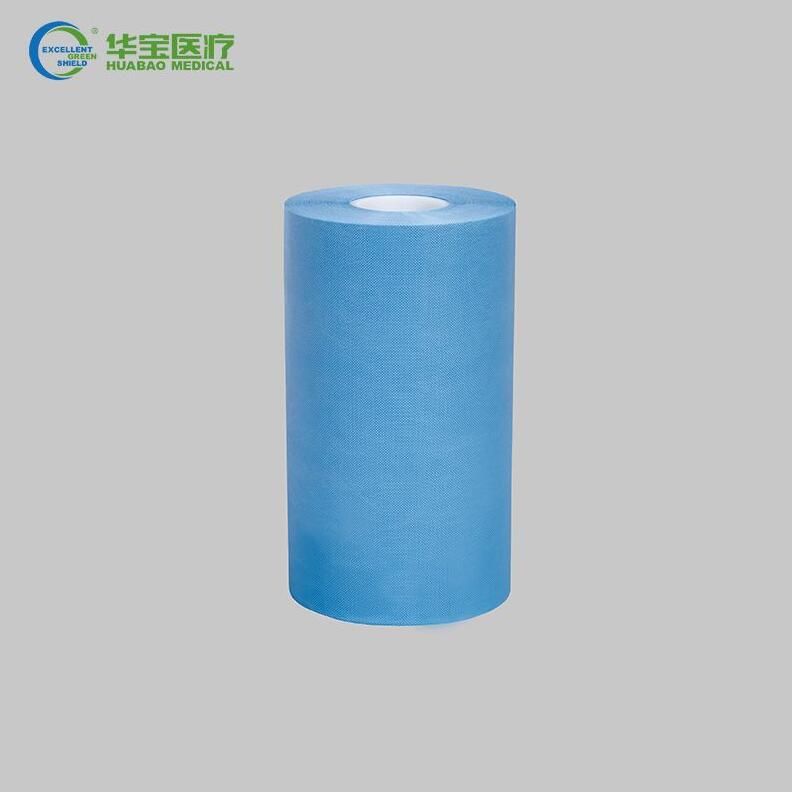All Things About Hydrophilic Non-woven Fabrics
In the world of textiles and materials, hydrophilic non-woven fabrics stand out as a remarkable innovation with a diverse range of applications. These fabrics possess unique properties that make them invaluable in various industries, from healthcare to consumer goods. In this article, we delve into all things hydrophilic non-woven fabrics, exploring their characteristics, uses, benefits, and the reasons behind their growing popularity.
Characteristics of Hydrophilic Non-woven Fabrics
Hydrophilic non-woven fabrics are engineered to attract and absorb water or other liquids. Unlike hydrophobic materials that repel water, hydrophilic fabrics have an inherent affinity for moisture. This characteristic is achieved through advanced manufacturing techniques that modify the fabric's surface properties, enabling it to rapidly wick away fluids.
These fabrics are typically made from synthetic fibers, such as polypropylene, polyethylene, or polyester, which are processed using techniques like meltblowing or spunbonding. The result is a material with an open, porous structure that enhances its water-absorbing capabilities.
Diverse Applications
The versatility of hydrophilic non-woven fabrics makes them well-suited for a wide range of applications across different industries:
Medical and Healthcare: Hydrophilic non-woven fabrics are extensively used in medical settings for wound dressings, surgical drapes, absorbent pads, and hygiene products like diapers and adult incontinence pads. Their rapid absorption and moisture management properties help maintain patient comfort and prevent skin irritation.

Personal Care and Hygiene: Consumer goods like wet wipes, facial tissues, and feminine hygiene products benefit from the absorbent nature of hydrophilic fabrics, ensuring efficient liquid distribution and retention.
Apparel: These fabrics find use in sportswear and activewear as moisture-wicking layers that help keep the body dry during physical activities.
Filtration: Hydrophilic non-woven fabrics are employed as components in filters for air, water, and oil purification processes due to their ability to efficiently capture and transport liquids.
Industrial: In industrial applications, they serve as absorbent materials for cleaning and spill containment.
Benefits of Hydrophilic Non-woven Fabrics
The adoption of hydrophilic non-woven fabrics offers several advantages:
Rapid Liquid Absorption: Hydrophilic fabrics quickly absorb and disperse liquids, reducing the risk of moisture-related issues.
Moisture Management: These fabrics efficiently manage moisture, promoting breathability and comfort.
Skin-Friendly: In healthcare and personal care products, hydrophilic fabrics are gentle on the skin and help prevent irritation.
Hygiene Enhancement: The ability to efficiently absorb liquids contributes to enhanced hygiene and cleanliness in various applications.
Versatility: Hydrophilic non-woven fabrics can be engineered with different levels of absorbency and surface properties to suit specific requirements.
Environmental Considerations: Some hydrophilic non-woven fabrics are biodegradable or made from recycled materials, aligning with sustainability goals.
Growing Popularity and Future Trends
The increasing demand for advanced materials that offer improved functionality and comfort has contributed to the growing popularity of hydrophilic non-woven fabrics. As industries continue to prioritize moisture management, hygiene, and sustainability, these fabrics are likely to see expanded usage.
Innovations in manufacturing techniques and materials may lead to further enhancements in the properties of hydrophilic non-woven fabrics, making them even more effective in various applications. Additionally, ongoing research into sustainable alternatives could pave the way for eco-friendly hydrophilic fabrics that align with global environmental initiatives.
Conclusion
Huabao Hydrophilic non-woven fabrics have emerged as a game-changer in industries that require efficient moisture management and liquid absorption. Their unique properties, coupled with their diverse range of applications, make them an indispensable component in healthcare, personal care, apparel, filtration, and beyond. As technology continues to advance, these fabrics are likely to play an increasingly significant role in addressing challenges related to hygiene, comfort, and sustainability.



